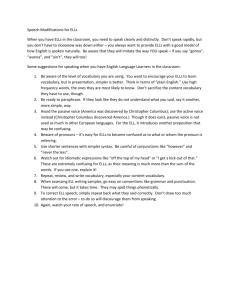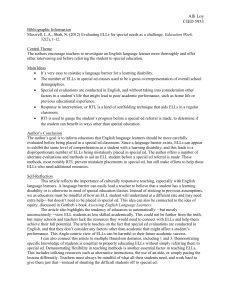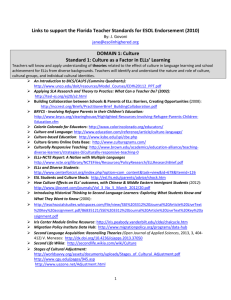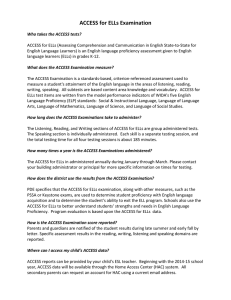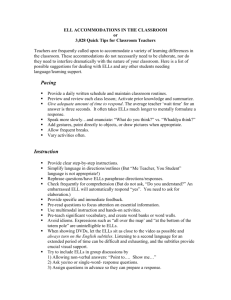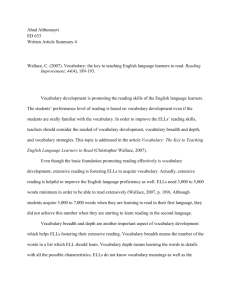ELL Behaviors Mimicking Learning Problems: A Guide
advertisement
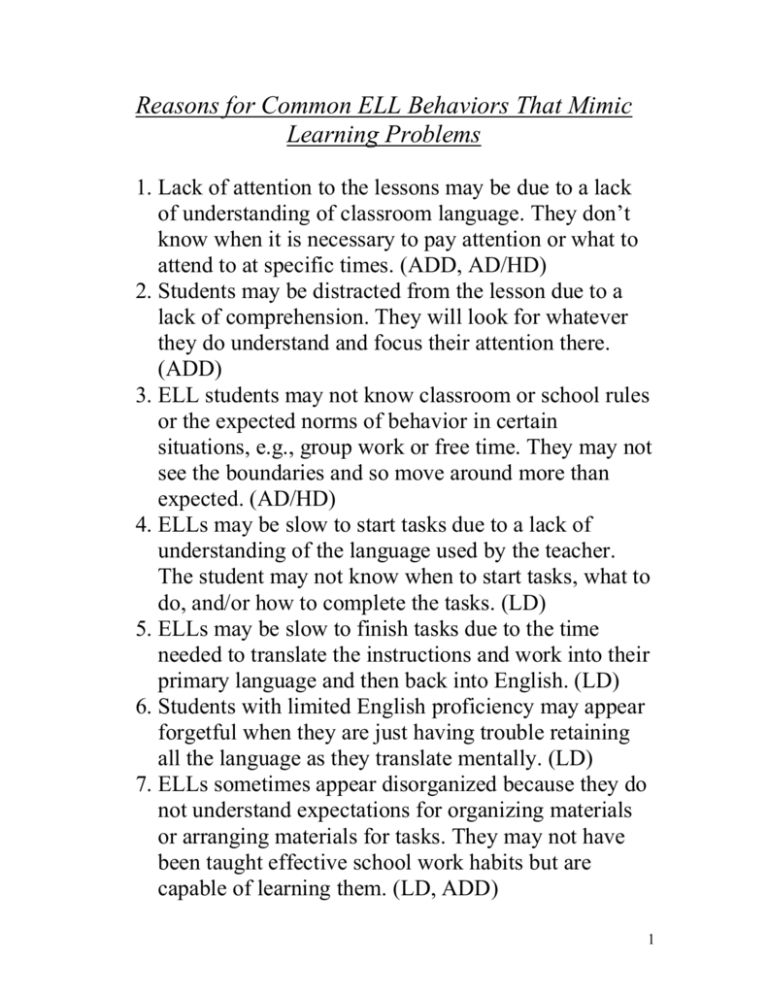
Reasons for Common ELL Behaviors That Mimic Learning Problems 1. Lack of attention to the lessons may be due to a lack of understanding of classroom language. They don’t know when it is necessary to pay attention or what to attend to at specific times. (ADD, AD/HD) 2. Students may be distracted from the lesson due to a lack of comprehension. They will look for whatever they do understand and focus their attention there. (ADD) 3. ELL students may not know classroom or school rules or the expected norms of behavior in certain situations, e.g., group work or free time. They may not see the boundaries and so move around more than expected. (AD/HD) 4. ELLs may be slow to start tasks due to a lack of understanding of the language used by the teacher. The student may not know when to start tasks, what to do, and/or how to complete the tasks. (LD) 5. ELLs may be slow to finish tasks due to the time needed to translate the instructions and work into their primary language and then back into English. (LD) 6. Students with limited English proficiency may appear forgetful when they are just having trouble retaining all the language as they translate mentally. (LD) 7. ELLs sometimes appear disorganized because they do not understand expectations for organizing materials or arranging materials for tasks. They may not have been taught effective school work habits but are capable of learning them. (LD, ADD) 1 8. Students with a limited understanding of English may appear disruptive in class when they attempt to get help in understanding instructions or as a result of their frustration in not understanding what is expected. (Behavior problems) 9. Misbehavior without an obvious precedent may be related to the ELLs’ frustration with the pace or depth of understanding in the classroom. (Emotional/behavior problems, social maladjustment) 10. Students with limited English may misbehave in reacting to another’s comments due to misinterpretation of peers’ or teachers’ comments/tone/nonverbal behavior/laughter due to cultural differences. (Behavior problems, social maladjustment) 11. Poor language use due to normal L2 language learning stages. (Language disorder): a. Overgeneralization of rules (He runned home) b. Simplification (He home) c. Imitation d. Avoidance e. Use of formulas and routines 12. ELLs’ silence or refusal to talk in group setting is commonly due to the “Silent Period.” (Language disorder, anxiety disorder, selective mutism) 13. ELLs may not ask questions in class due to cultural habits or lack of English proficiency. (Learning problems, emotional issues) 14. A lack of eye contact is often due to cultural rules. (Anxiety, interpersonal relationship issues) 2 15. Homework not done/completed/signed is frequently due to a lack of help at home or no one at home to sign. (Learning problems, motivational issues, behavior issues) 16. More value in ELL homes may be placed on “survival skills” than “academic skills” due to necessity or cultural traditions. This may be temporary and may be gender specific. (Motivation issues) 17. Inappropriate basic school behavior in ELLs could be due to a lack of prior schooling, cultural differences, or misunderstanding. (Cognitive problems, emotional/behavior issues) 18. ELLs may show poor basic test-taking skills due to a lack of prior school experience or cultural differences. (Cognitive problems, LD) 19. Students with limited English may show poor retention of information due to a lack of prior experiences to which to relate new information or a limited English vocabulary. (Cognitive/memory issues) Jennifer Loiseau September, 2012 3


